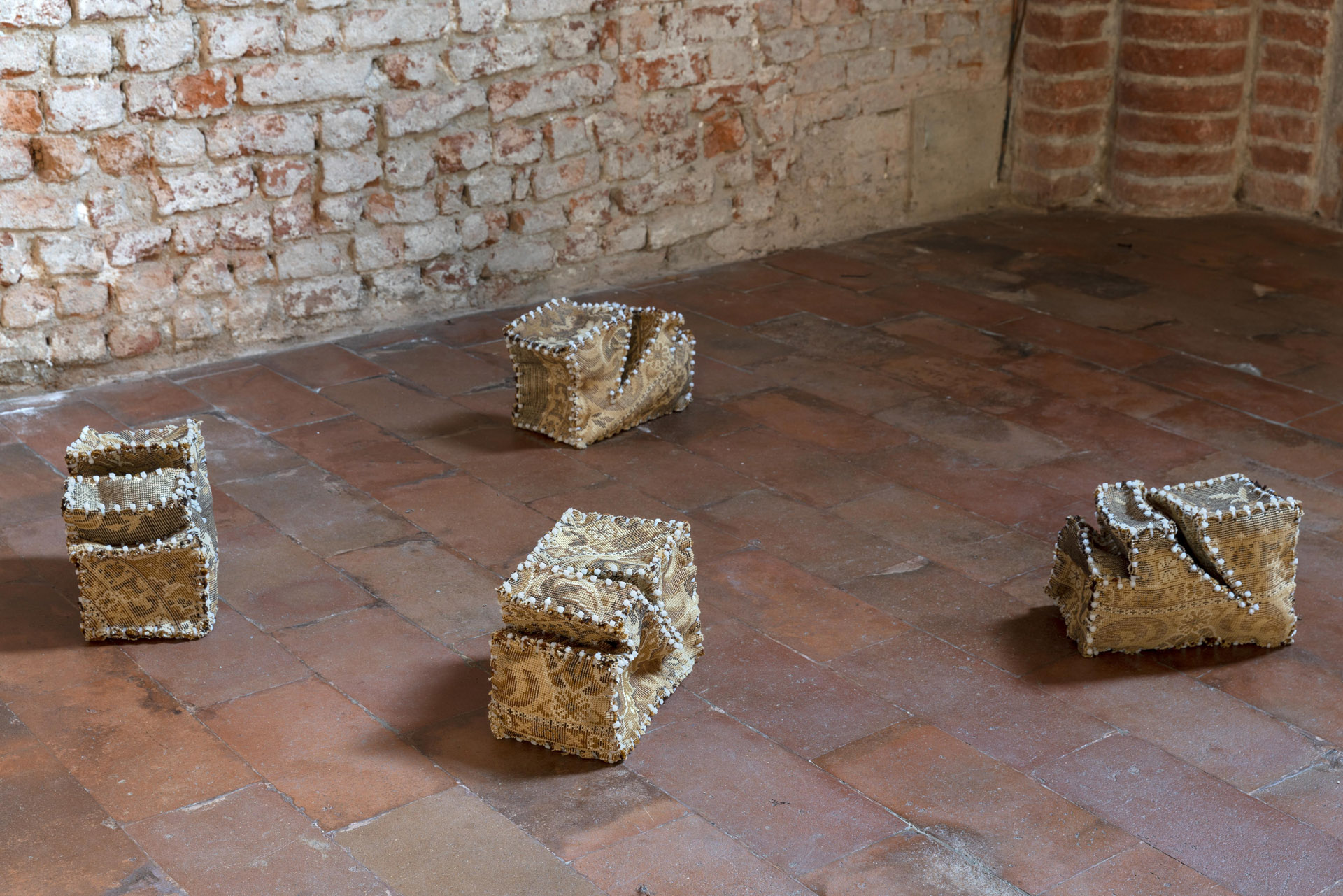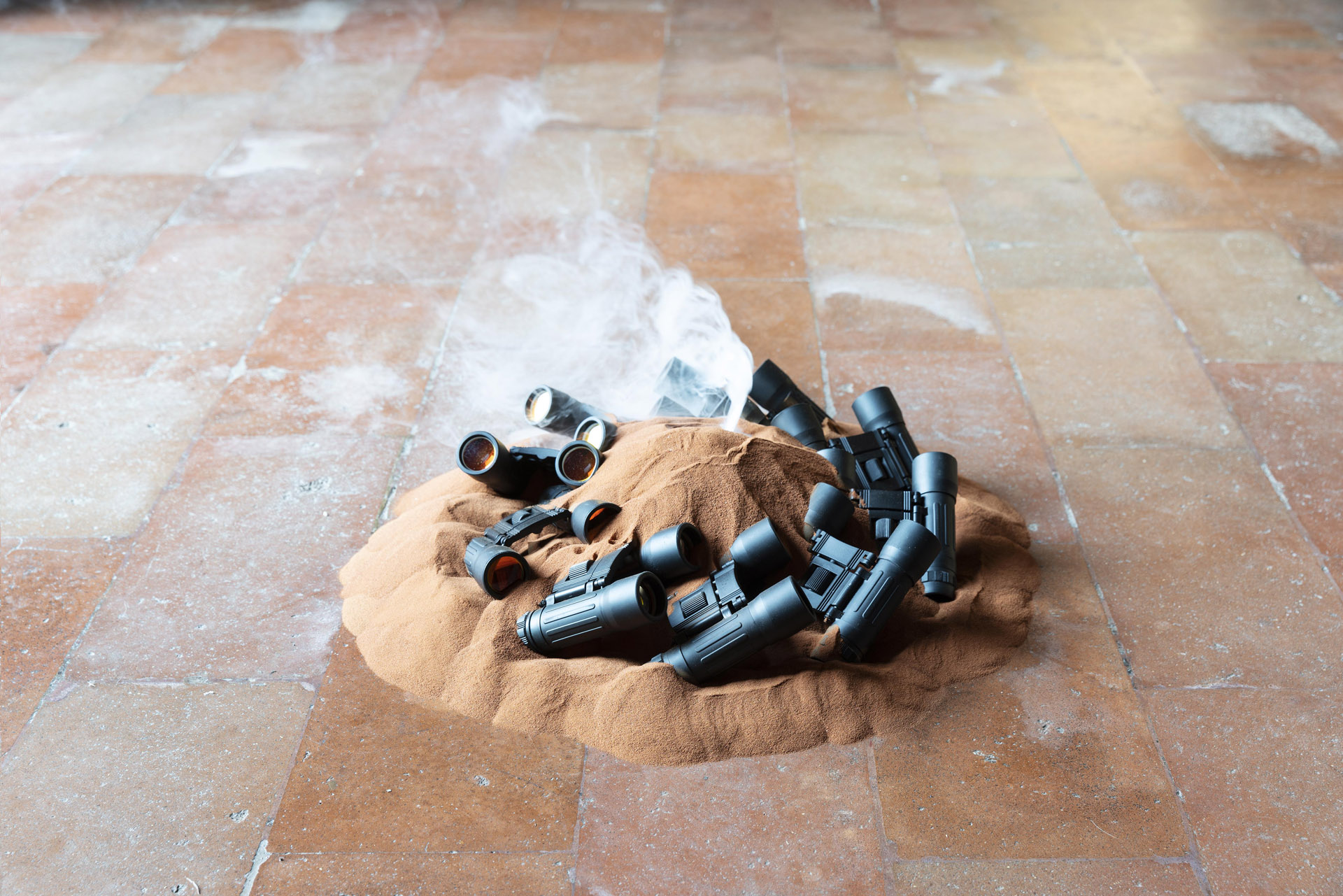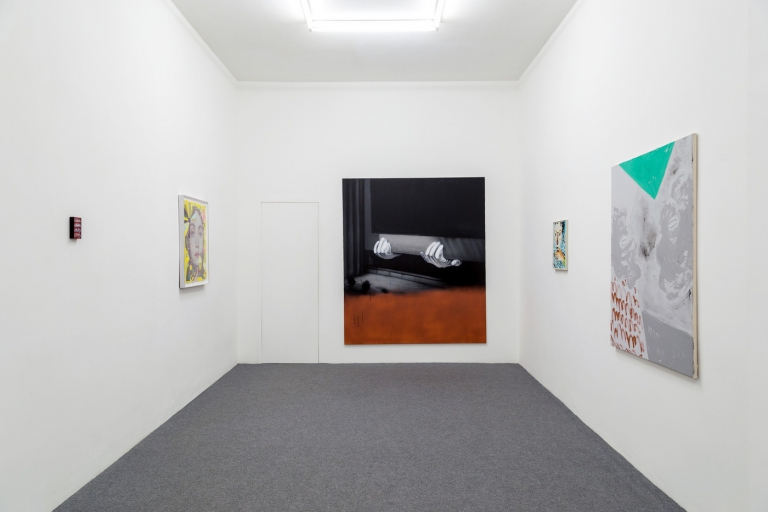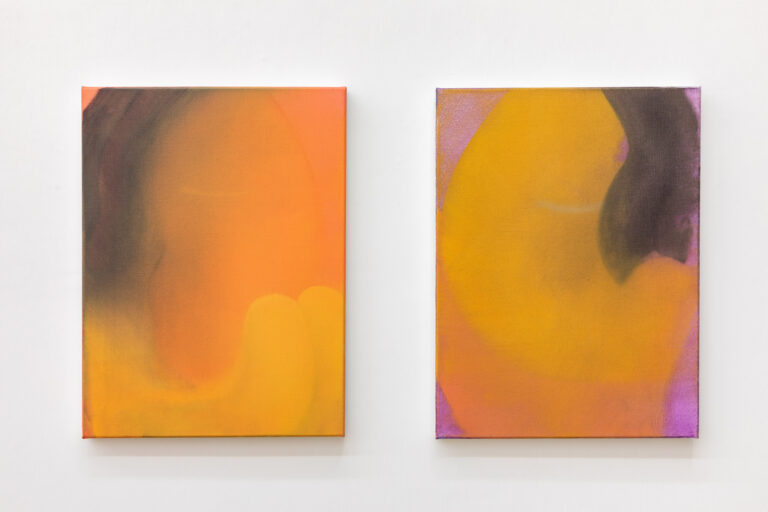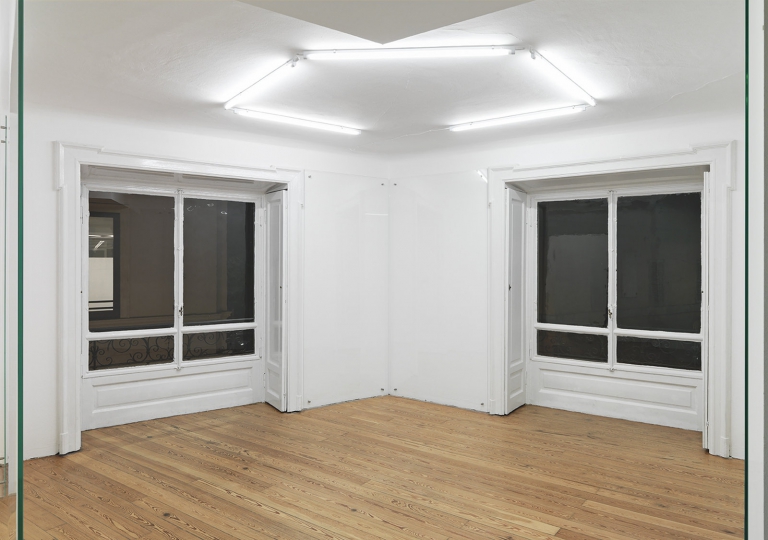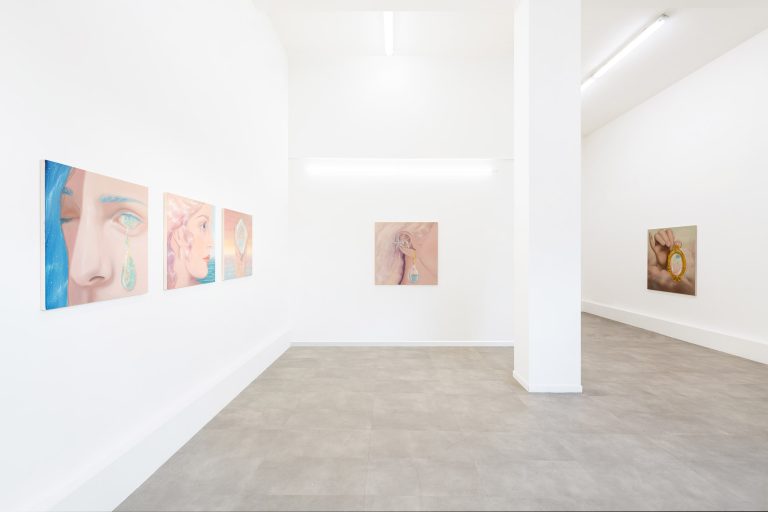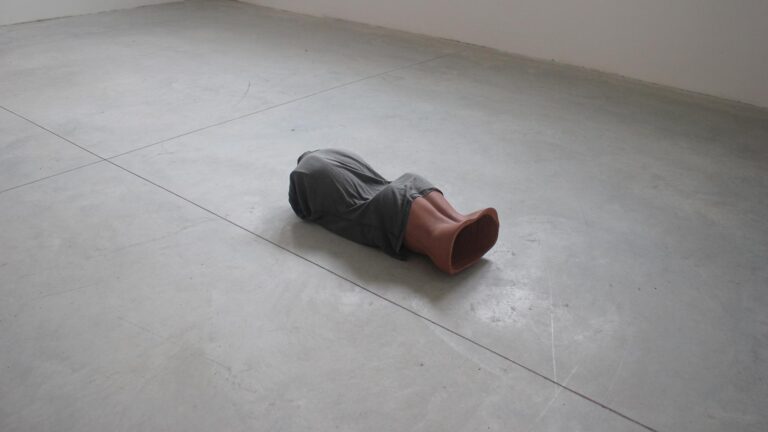Artist: Cezary Poniatowski
Exhibition title: Relief
Venue: Basilica di San Celso, Milan, Italy
Date: September 9 – 19, 2021
Photography: Maurizio Esposito / all images copyright and courtesy of the artist and LAQ – lartquotidien
The times when Milan’s beautiful basilica di San Celso was built are not associated with humour or the grotesque, particularly for Christians. The medieval Jesus never laughed. ‘For what would He laugh about? This omnipotent and perfectly self-sufficient Being, who knows, sees, and can do all? The three divine persons have no reason for mirth. As spirit pure, incorporeal and asexual, the immutable and immovable divine trio is forever locked in self-contemplation’.1
Indeed, what is there to laugh about, what is there to fear and to feel when you’re in the sin-less Garden of Eden where everything is impeccable and good? Desires, fears and other human feelings that provoke questions or contemplation appear when the ideal order of the world is broken, when cracks emerge.
What was feared by Christians in the early Middle Ages serves as Cezary Poniatowski’s creative fuel: worldly imperfections, flaws in the matter, the fragmentary nature of memories, a clash between the sacred and the profane. Poniatowski digs, scratches and knocks until the material breaks, bends or cracks, revealing new, hidden qualities. Wooden frames are de-formed as if through exorcisms, leather is stretched to the limits of decency, what is sup-posed to blow exudes smoke, and what might possibly smoke instead produces light.
The abstract reliefs presented in the basilica, made of carpets turned inside out, seem to include elements of Romanesque architecture: harmonious arches, spatial arrangements that resemble apses and portals. These coarse reliefs bring to mind carved Stations of the Cross found in churches, or their oneiric phantoms – a composition of bizarre forms instead of figures, a slightly diabolical, grotesque scene with not a trace of the familiar, repeated narrative and professions of faith.
The title of Cezary Poniatowski’s exhibition is ambiguous. It may indicate both the form of some of the representations – the relief as a convexity – and the feeling of relief. This emotion may feel different in the realm of the sacred, when a sinner is relieved after confessing his misdeeds, and in the realm of the profane – when we free ourselves from dogmas, look at ourselves and the products of our civilization with a touch of irony, allow ourselves to be carried away by imagination.
One may feel relieved when gazing at the rays of sun entering through the rose window of the Romanesque basilica di San Celso, which is famed for many miraculous events (among them putting a stop to an epidemic – we could use something of this kind now!). Alternatively, one may glance downwards to the spot of light falling through the chapel’s entrance door, at Poniatowski’s installation built out of red desert sand, with binoculars sticking out of it like eyes, reflecting the gleam – and feel happily liberated from the solemnity that is so easy to feel in locations this permeated with mysticism.
Cezary Poniatowski’s art does not lend itself to easy, radical assessments. The artist achieves a grotesque effect by combining elements from different orders in a single work, transgressing habits, clashing mutually exclusive notions. The pots with red binocular eyes growing out of them instead of plants or the row of strangely familiar, though hardly identifiable elements that resemble heads of fantastic creatures are surreal objects, and their origins may stem from the oeuvre of Bosch or Arcimboldo, who, when observing the world, were able to demonstrate human faults through a set of abstract attributes.
By detecting the comical aspect in the clashes of matter with our habits and imagination, Cezary Poniatowski’s works effectively defend us against pompous narratives, provoke a smile and seem to fit in with William Blake’s creed: ‘Damn, braces: Bless relaxes.’
Georges Minois, Histoire du rire et de la dérision (Fayard, 2000).
Text by Jagna Lewandowska
[1] Georges Minois, Histoire du rire et de la dérision (Fayard, 2000), p. 111.























